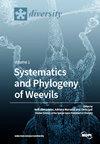南黄海海州湾细菌多样性的季节和空间变异
IF 2.1
3区 生物学
Q2 BIODIVERSITY CONSERVATION
引用次数: 0
摘要
有害藻华(HABs)会对沿海生态系统和水产养殖业的恢复能力产生重大不利影响。本研究于3 - 8月在中国海州湾赤潮高发地区的8个不同站点采集样本,采用Illumina Novaseq高通量测序和多元统计分析方法对细菌群落及其与不同环境因子的关系进行了表征。共鉴定出27门49纲158目294科522属。γ变形菌门、α变形菌门、拟杆菌门、酸性微生物门、杆菌门、放线菌门、蓝藻门、梭菌门和酸杆菌门是最丰富的门,酸杆菌门、拟杆菌门、厚壁菌门、放线菌门、绿杆菌门、变形菌门和蓝藻门是最重要的门。Mantel试验和冗余分析表明,温度是影响细菌群落结构的主要环境因子,其次是硅酸盐、溶解有机磷(DOP)和溶解氧(DO)。在OTU丰度较高的属中,Nautella与DO呈正相关,与盐度呈负相关;浮游藻类与盐度呈正相关,与硝酸盐和亚硝酸盐呈负相关。某些科(Flavobacteriaceae, Rhodobacteraceae,和Clade_I (SAR11分支))和属(Methylophaga, Alteromonas, Oleiphilus, Marinobacter, Bacillus, Nautella和Vibrio)与造成赤潮的浮游植物物种有关。本研究对发生赤潮的沿海地区的细菌群落特征提供了新的认识,并对这些群落结构的时空变化提供了详细的描述。本文章由计算机程序翻译,如有差异,请以英文原文为准。
Seasonal and Spatial Variability in the Bacterial Diversity in Haizhou Bay in the Southern Yellow China Sea
Harmful algae blooms (HABs) can have significant adverse effects on coastal ecosystems and aquaculture resiliency. We collected samples from March to August at eight different stations in Haizhou Bay (China), a region with a high frequency of HABs, and used Illumina Novaseq high-throughput sequencing and multivariate statistical analysis to characterize the bacterial communities and their relationships with different environmental factors. We identified 27 phyla, 49 classes, 158 orders, 294 families, and 522 genera. Gammaproteobacteria, Alphaproteobacteria, Bacteroidia, Acidimicrobiia, Bacilli, Actinobacteria, Cyanobacteria, Clostridia, and Acidobacteria were the most abundant classes, and Acidobacteria, Bacteroidetes, Firmicutes, Actinobacteria, Chloroflexi, Proteobacteria, and Cyanobacteria were the keystone phyla. Based on the Mantel test and redundancy analysis, temperature was the main environmental factor affecting the structure of the bacterial communities, followed by silicate, dissolved organic phosphorus (DOP), and dissolved oxygen (DO). Among the genera with high OTU abundance, Nautella was co-related positively with DO and negatively with salinity; Planktomarina was co-related positively with salinity and negatively with nitrate and nitrite. Certain families (Flavobacteriaceae, Rhodobacteraceae, and Clade_I (SAR11 clade)) and genera (Methylophaga, Alteromonas, Oleiphilus, Marinobacter, Bacillus, Nautella, and Vibrio) had associations with phytoplankton species that were responsible for HABs. This research provides new insights into the characteristics of the bacterial communities that occur in coastal areas that have HABs and provides detailed descriptions of the spatial and temporal changes in the structure of these communities.
求助全文
通过发布文献求助,成功后即可免费获取论文全文。
去求助
来源期刊

Diversity-Basel
Environmental Science-Ecological Modeling
CiteScore
3.40
自引率
12.50%
发文量
925
审稿时长
11 weeks
期刊介绍:
Diversity (ISSN 1424-2818) is an international and interdisciplinary journal of science concerning diversity concept and application, diversity assessment and diversity preservation. It is focused on organismic and molecular diversity. It publishes reviews, regular research papers and short notes in the regular issues. Related news and announcements are also published. Our aim is to encourage scientists to publish their experimental and theoretical results in as much detail as possible. Therefore, there is no restriction on the length of the papers. Full experimental details must be provided so that the results can be reproduced.
 求助内容:
求助内容: 应助结果提醒方式:
应助结果提醒方式:


